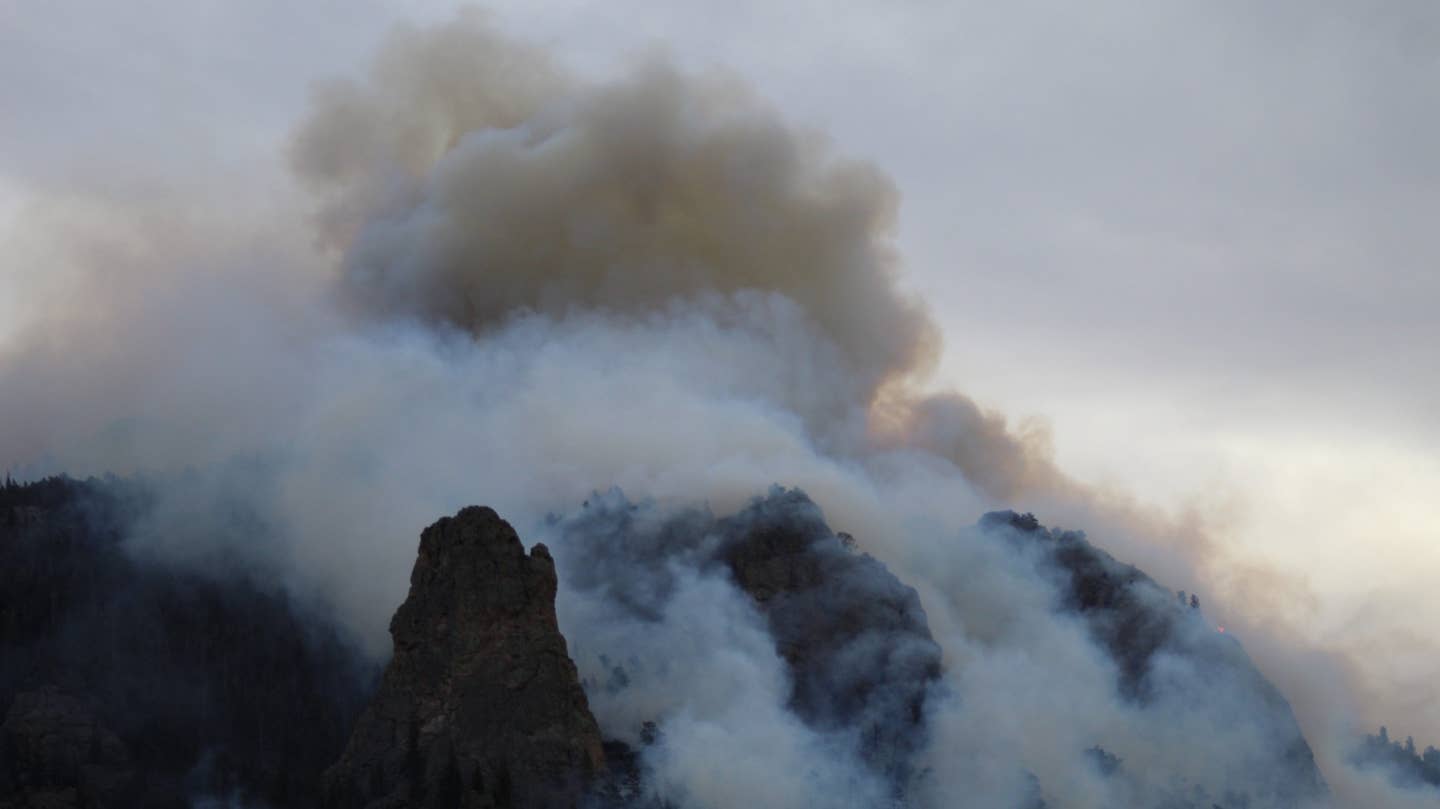Tanker Pilot Dies While Fighting Colorado Wildfire
A 32-year veteran of the U.S. Army and Air Force died in an accident while attempting to extinguish the Kruger Rock wildfire in northern Colorado.

Kruger Rock fire near Estes Park, Colorado, Nov. 16, 2021. Credit: Evan Schaefer
Editor's Note: This article originally appeared on FreightWaves.com.
An air tanker pilot died in an accident Tuesday evening while attempting to extinguish the Kruger Rock wildfire in northern Colorado.
The pilot has been identified as Marc Thor Olson, according to CO Fire Aviation Inc., the company that owned the aircraft.
“The CO Fire Aviation family is deeply saddened by the sudden, tragic loss of one of our brothers serving as a tanker pilot,” officials said in a statement on Facebook.
CO Fire Aviation also said that Olson was a veteran who served for 32 years in both the U.S. Army and Air Force. He began flying airplanes in 1979 and logged more than 8,000 total flight hours, including 1,000 hours of night flight.
Olson took off from Colorado Regional Airport in Loveland just before 6:15 p.m. MT, circling the fire a few times before dropping off the radar and never returning to the airport, according to FlightAware.
The Larimer County Sheriff’s Office began investigating reports of the accident around 6:37 p.m., according to a press release. They located the site around 9:49 p.m. and said Olson was the only person in the plane.
The aircraft is an Air Tractor 802F single-engine, fixed-winged tanker equipped with night-vision technology, which allows the pilot to see terrain through smoke and clouds, making it easier to locate hot spots. The Tuesday flight, designed to test the system during actual fire conditions, was the first at night in Colorado for this aircraft.
CO Fire Aviation said it’s cooperating with the Federal Aviation Administration and National Transportation SafetyBoard as the agencies investigate the cause.
Olson told KUSA-TV that he was excited to “make history” with the flight.
“Pretty cool thing to be a part of, I think,” Olson said before taking off. “This is the culmination of about five years of pretty hard work.”
The Colorado Division of Fire Prevention and Control said Wednesday that it’s been studying the use of aircraft in night operations on woodland fires at its Center of Excellence in Rifle.
Through its studies, the organization found that aerial support at night potentially offers increased advantages in fighting wildfires because of lower temperatures, increased humidity and reduced winds compared to daylight hours. However, most of the studies focused on helicopters and not fixed-wing aircraft.
“The use of rotary and fixed-wing aircraft at night, using vision technology, is widely and successfully used by the U.S. military and in certain public safety environments, but there is less research and practical experience with fixed wing assets in wildland fire suppression,” officials said in a release.
Tuesday night’s accident wasn’t the first time a fixed-wing air tanker went down while responding to a wildfire. On July 18, 2002, a four-engine World War II vintage PB4y impacted terrain while dropping retardant on a 4,100-acre fire near Estes Park.
An investigation by the NTSB determined the cause stemmed from fatigue cracks that led to the structural failure of the wings.
Six years later, firefighting pilot Gert Marais of Fort Benton, Montana, was killed when his single-engine airplane went down after dumping fire retardant at Fort Carson, Colorado.
The fire that started Tuesday morning was burning 146 acres and was 60 percent contained as of Thursday evening, according to the Larimer County Sheriff’s Office.

Sign-up for newsletters & special offers!
Get the latest FLYING stories & special offers delivered directly to your inbox






